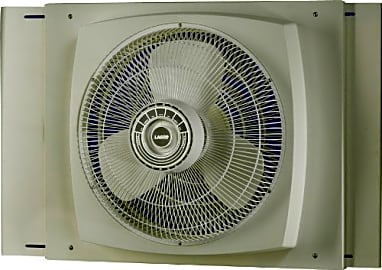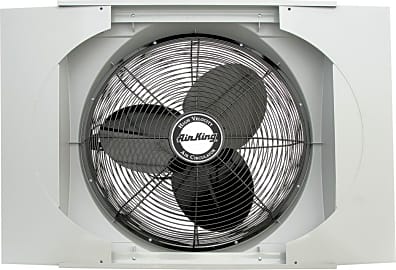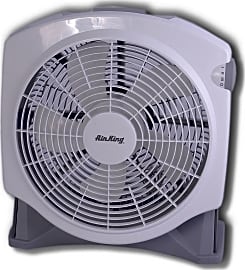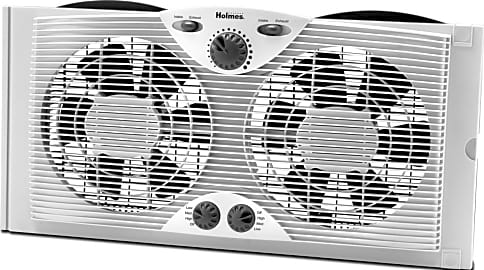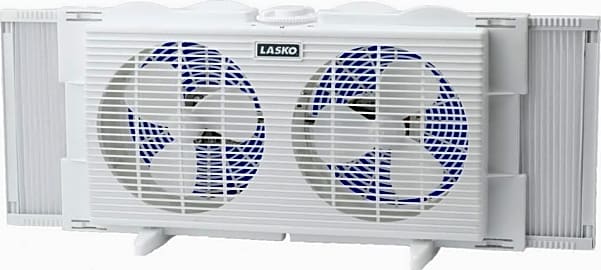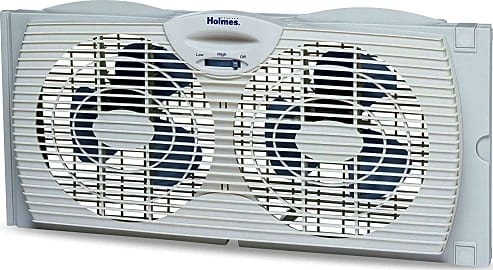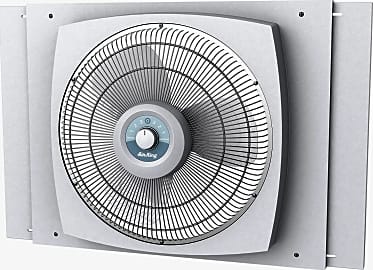The 10 Best Window Fans

This wiki has been updated 40 times since it was first published in February of 2015. Window fans are a great way to exhaust stale air from rooms or create a cool breeze inside, and they can be particularly effective alongside an air conditioner or evaporative cooler. Offered in a number of sizes with various levels of power, one of these selections will fit in your frames and ensure good ventilation in your home or workplace. When users buy our independently chosen editorial recommendations, we may earn commissions to help fund the Wiki.
Editor's Notes
May 21, 2019:
The Genesis Twin took over the top spot on our list, as it boasts an impressive array of features, such as a thermostat, an electrically reversible airflow, and two efficient copper motors (one for each fan). It can be expanded an additional 6.5 inches on either side, to fit most windows. It’s highly portable, with a carrying handle that tucks in the back when not in use, as well as two removable legs for those who wish to use it in a freestanding fashion.
Another new addition is the Homes HAWF-2021, which is a reliable, budget-friendly option for those not seeking all of the extra bells and whistles. Its direction can be reversed when you manually turn it around, and two speed settings are included. In this update, we removed the Bionaire BW2300 and the CoolWorks 5280A due to issues with availability.
Special Honors
Hammacher Schlemmer Low Profile Window Fan This reliable selection produces high air velocity and pushes a large volume, and its handy remote control lets you adjust the three fan speeds and thermostat with ease. It also makes very little noise – around the same level as a normal conversation. Since it’s only 13 inches high, you’ll still have a nice view out of your window. hammacher.com
All Fans Are Not Created Equal
For starters, a lot of upscale models now come equipped with their own remote controls.
Window fans have come a long way over the years. As a consumer, it helps to stay on top of what's changed.
For starters, a lot of upscale models now come equipped with their own remote controls. Most of these models also come equipped with a wide range of settings. Certain fans have been designed with built-in extenders, allowing people to secure these units inside a window pane without any risk of vibrating. A lot of window models have also been designed with built-in pegs, allowing people to place the fan on any stable surface regardless of the area. The more settings a fan has, the greater the chances that a person can reverse the stream, circulating air in the opposite direction. A handful of models even come with their own thermostats, enabling a fan to adjust according to the temperature in each room.
Putting all of these features aside, the bottom line is that a fan still needs to operate efficiently. In that spirit, it's worth considering that metal blades circulate air more effectively than their plastic counterparts. It's also worth considering that a fan motor's voltage may be the most reliable way of gauging the power of that model's blast. Finally, it's worth conducting some research on each model's shelf life. Assuming you've found a decent fan, you want it to last.
Dealing With Dust (AKA "Your Fan's Worst Enemy")
Dust is unavoidable if you own and operate a window fan. While you don't need to police dust on a day-to-day basis, you do want to avoid allowing the type of build up that can slow down, or even stall, an average fan's performance. The good news is that keeping a fan clean is easy work. In most cases all you really need is a screwdriver, a vacuum with a hose, some Windex, a roll of paper towels, and maybe a user's manual for the fan (assuming the grates look difficult to take off).
Got all those? Great! You're ready to get started. First, make sure the fan is unplugged. Once you've done that, remove all of the screws along the front and back grates so you can take these grates off. Next, use your vacuum to suck up any dust bunnies that have accumulated in and around the blades and the motor. Now grab the Windex and some paper towels so you can wipe down all of the rotors. Once you've completed the front side, flip the fan over and repeat the same process along the back. Be mindful of the motor's casing. You don't want too much of that moisture to trickle in.
Head outside and work on the grates now. You can use a bucket of hot water to scrub these with a sink brush or a pipe cleaner. You may want to spray them with a hose, as well. Once you have removed all of the dust and mildew, leave the grates to dry. Last step: Screw the grates back on. Your window fan is squeaky clean and ready to go.
A Brief History of The Window Fan
The earliest incarnation of a fan dates back to 500 B.C. These fans were called punkahs, a Hindi variation of the word pankh, which refers to the wind that is created when a bird flaps its wings. The first punkahs were made out of palmyra reeds. The loose materials were woven together, and then operated by hand.
The loose materials were woven together, and then operated by hand.
During the Colonial Age the term punkah came to describe a new type of fan. This fan resembled a giant flag, usually designed out of rattan, that swung back and forth from the ceiling, circulating air whenever prompted by a lever. Punkahs were the expressed province of the rich. More often than not, these devices were hung in the houses of aristocrats, where Indian servants, or punkah wallahs, were relegated to operate the levers by hand.
Over the next few centuries researchers and scientists conducted experiments based on funneling airflow and recirculating it to cool an environment. The first significant breakthrough of the modern fan era occurred with the invention of the steam fan. Thirty-three years later (i.e., 1882) the first electrical fans came along, and by the early 20th Century, companies had begun mass producing electric fans for the home.
The industry has grown and shifted during the past 50 years, most notably in response to the widespread use of air conditioning and central air. Despite that, window fans remain a fixture, if not an inexpensive alternative for warmer climates. Today's models range from the ever-reliable box fan to an entire line of upscale fans that include everything from air-quality filtration to thermostat control.


